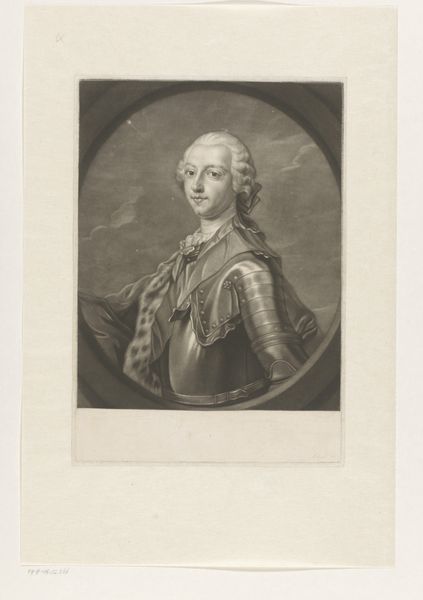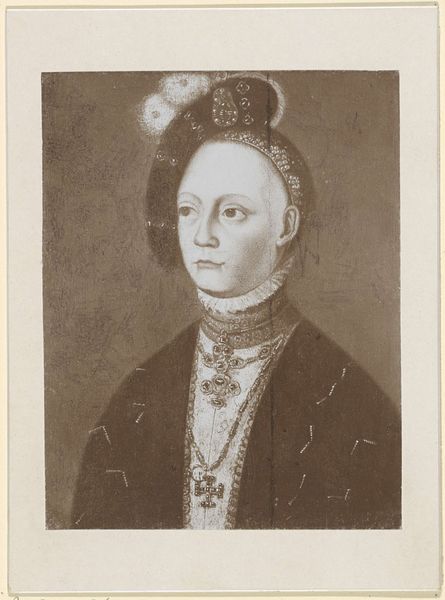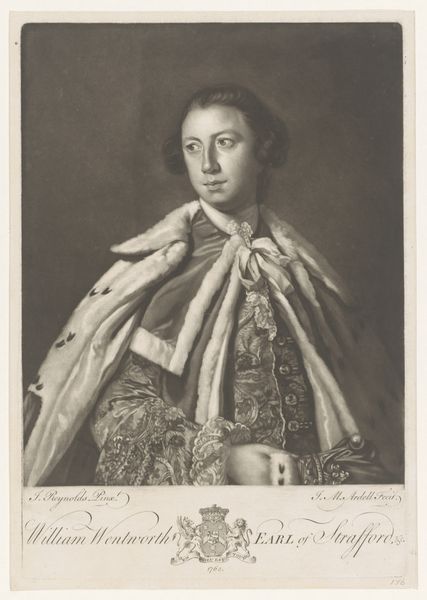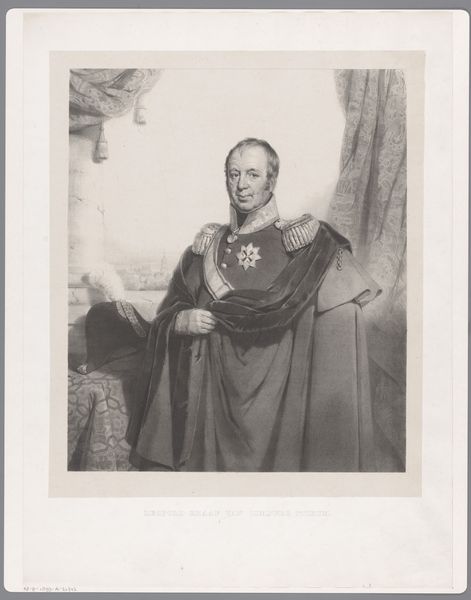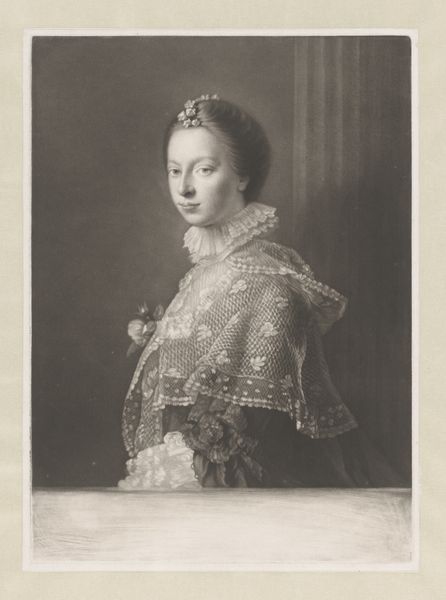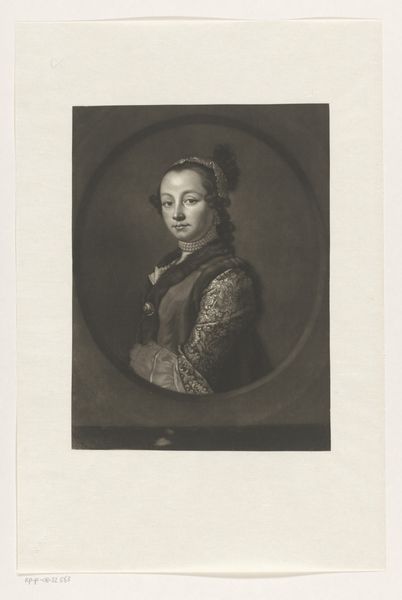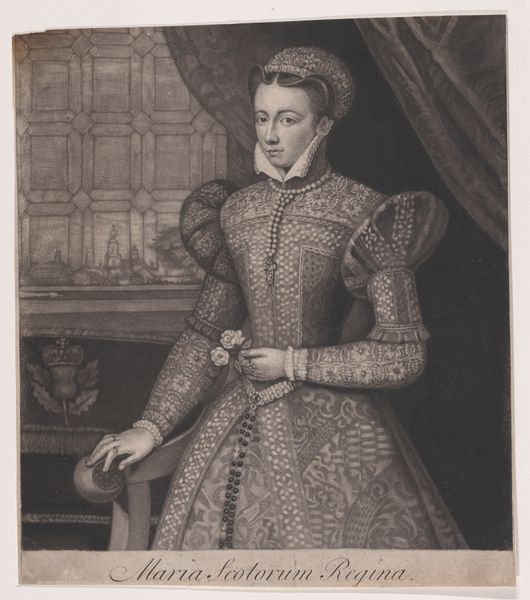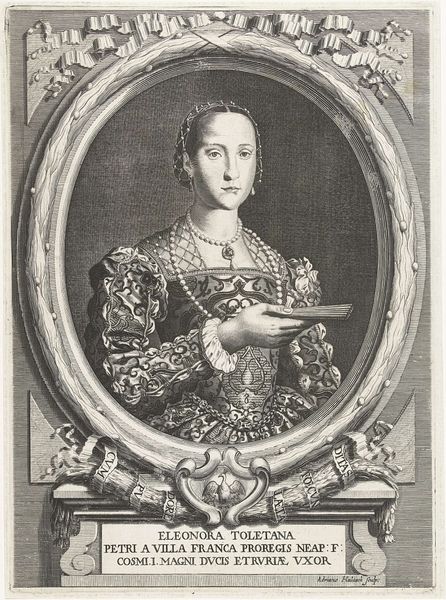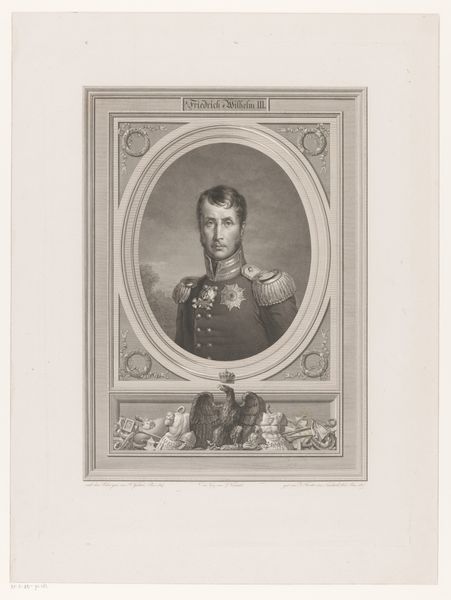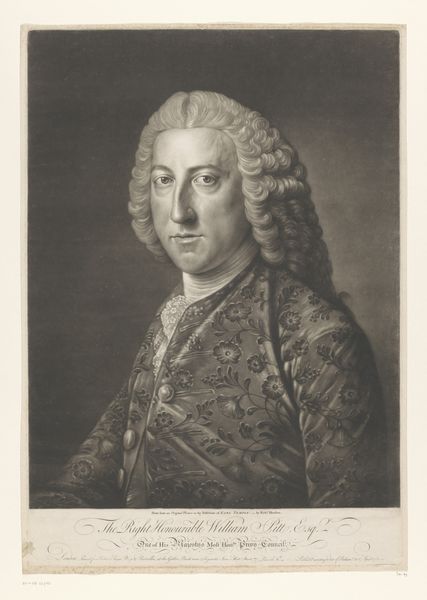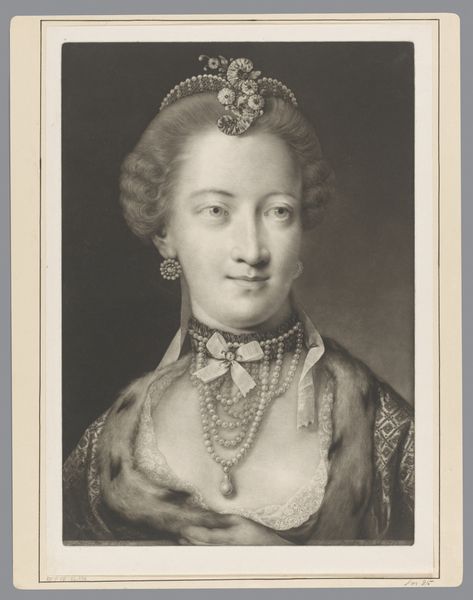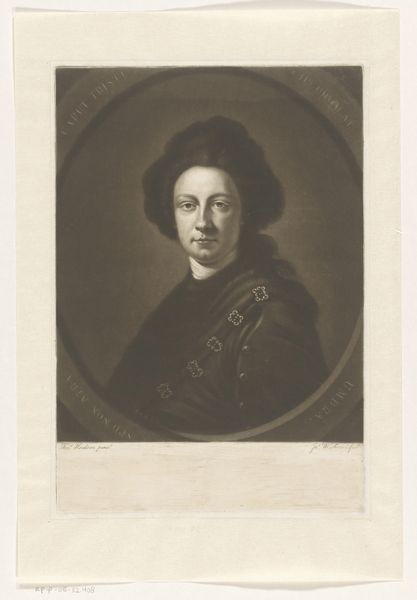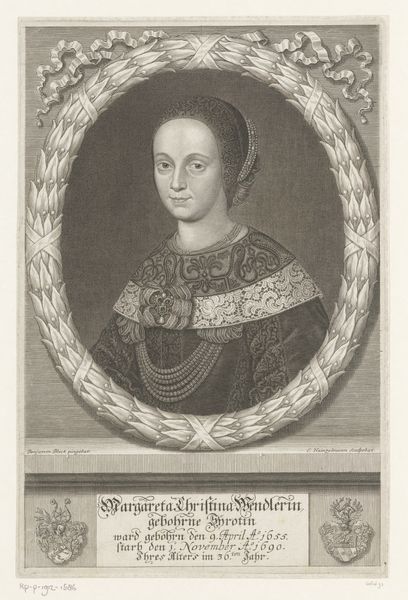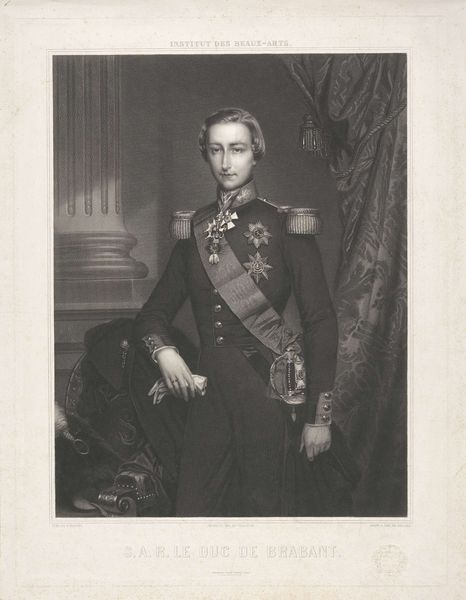
Fotoreproductie van het geschilderde portret van Eleonora van Toledo door Angelo Bronzino 1930
0:00
0:00
print, photography, ink
#
portrait
# print
#
photography
#
historical photography
#
ink
Dimensions: height 244 mm, width 183 mm
Copyright: Rijks Museum: Open Domain
Editor: Here we have a 1930 photogravure by Domenico Anderson, "Fotoreproductie van het geschilderde portret van Eleonora van Toledo door Angelo Bronzino," which translates to "Photographic reproduction of the painted portrait of Eleonora of Toledo by Angelo Bronzino". The somber tones and the subject's reserved expression create such a regal, almost untouchable aura. What’s your take on it? Curator: This image, beyond being a reproduction, exists as its own historical artifact, capturing not just Eleonora but also early 20th-century understandings of power, gender and visibility. Think about it: Domenico Anderson chose to photograph Bronzino’s painting. He mediated our access. This speaks to the fascination with, and the potential commodification of, female power. What does it mean to reproduce an image of a powerful woman like Eleonora, a Duchess, during a time of evolving gender roles? Editor: So you’re saying that the act of reproducing the painting itself carries a cultural weight? Curator: Precisely! And consider the print medium itself. Photography democratized art but also changed its meaning. This image circulates, becoming accessible to a wider audience than Bronzino's original ever could. However, in doing so, we risk losing the textures, the painterly details, the sheer *presence* of the original, flattening the image. Who gets to access art, and how does that access affect our understanding? Those are key questions. Editor: I never considered the social implications of reproducing an artwork. This print transforms the portrait from a singular object of reverence to a mass-produced representation. Curator: Exactly. And how that image functions in different contexts, that's the core of the issue. Considering both Bronzino’s original and Anderson's reproduction through an intersectional lens, questioning the distribution of art and its subjects is crucial. Editor: This has made me rethink how I approach not just portraits, but photographic reproductions in general. I'm realizing there's always another layer to peel back. Curator: Agreed, and acknowledging these layers reveals not only art’s intricate construction, but the broader power structures shaping our views of history and identity.
Comments
No comments
Be the first to comment and join the conversation on the ultimate creative platform.
